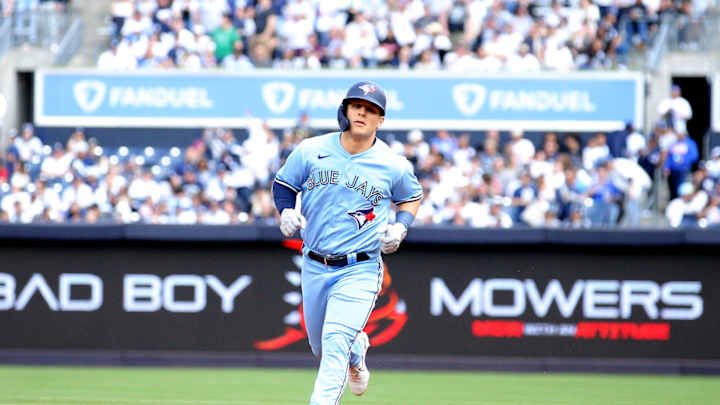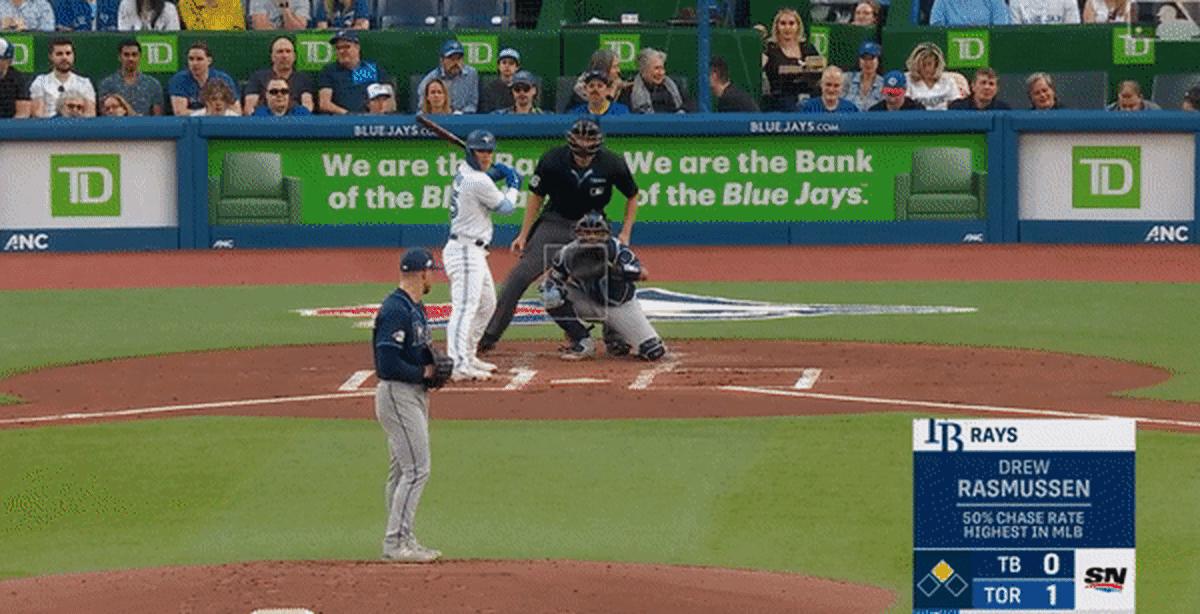The Book of Varsho: The Blue Jay Outfielder's New Weapon

TORONTO — As teammates shower, ice their elbows, and change into street clothes after games, Daulton Varsho sits at his corner locker and pulls out a journal.
For each pitcher the Blue Jays outfielder saw that day, he jots down a few notes—what they threw, how they attacked, how he felt in the box. It's a daily tradition Varsho started this year, hoping to take his plate approach to the next level.
“I wanted to do it in the past and I just never really got around to it," Varsho said. "But I figured this year I’m going to take the time to do it, take the time to write things down, and get my thoughts on paper.”
Varsho found himself prepping for games and series in the past trying to think back on previous at-bats. He can watch film of what opposing pitchers throw, but it doesn't help him pick up an arm slot or remember what that sinker in on his hands felt like. So, before 2023 Spring Training, he busted out the notebook.
"I have so many thoughts throughout the season, and I'm like 'oh shoot what did I say back then?'" Varsho said. "Now I have it written down, and I can go back to it."
While the 26-year-old's overall numbers aren't where he wants them (.585 OPS through 27 games), Varsho's plate approach has taken a step forward in '23. His 10.2% walk rate, 4.09 pitches per plate appearance, and 34.1% chase rate are all career bests.
Training swing decisions is hard, but the key for Varsho is understanding what lanes and arm slots guys attack him from. Picking up the ball early gives him more time to track the pitch, spot spin, and take the bad breaking balls. Knowing where he looked to pick up the ball for a specific pitcher (at the hip, over the shoulder, etc.) helps him next time out.
In spring, Varsho faced Rays starter Drew Rasmussen. The hard-throwing righty fed him all fastballs, breaking out a fourth-pitch cutter off the zone for a strikeout. Six weeks later, when the Jays saw Rasmussen in the regular season, Varsho went back to his notes. They reminded him of Rasmussen's whippy delivery and where the ball pops up above his head as the righty drives to the plate. The Toronto outfielder went 1/2 with a walk against Rasmussen in that rematch, walking on the very same cutter outside the zone he struck out in spring.

It's not all about release point or pitch selection, though, as Varsho also notes how the at-bat made him feel. It's just a word or a sentence to summarize his timing and anticipation of the pitch, but Varsho's found it works as a prompt to kickstart his brain back to the previous at-bat.
He's found the approach particularly helpful for relievers, who batters only see once in a game. If you take one or two pitches to get comfortable with the new pitcher, you're already behind 0-2. Varsho tries to group pitchers by similar release or pitch mix, noting in the journal what category they fell into.
"There's some guys who I put in certain buckets," Varsho said. "Guys with the same arm slot, same pitch type, so I put them in the same category."
In a baseball environment filled with film breakdowns and advanced scouting reports, Varsho's added an inherently old-school tool to his game prep. So far this season, he hasn't had many chances to go back to the notes. But, as the pages fill up and the book of pitchers expands, the outfielder feels his edge will grow.
